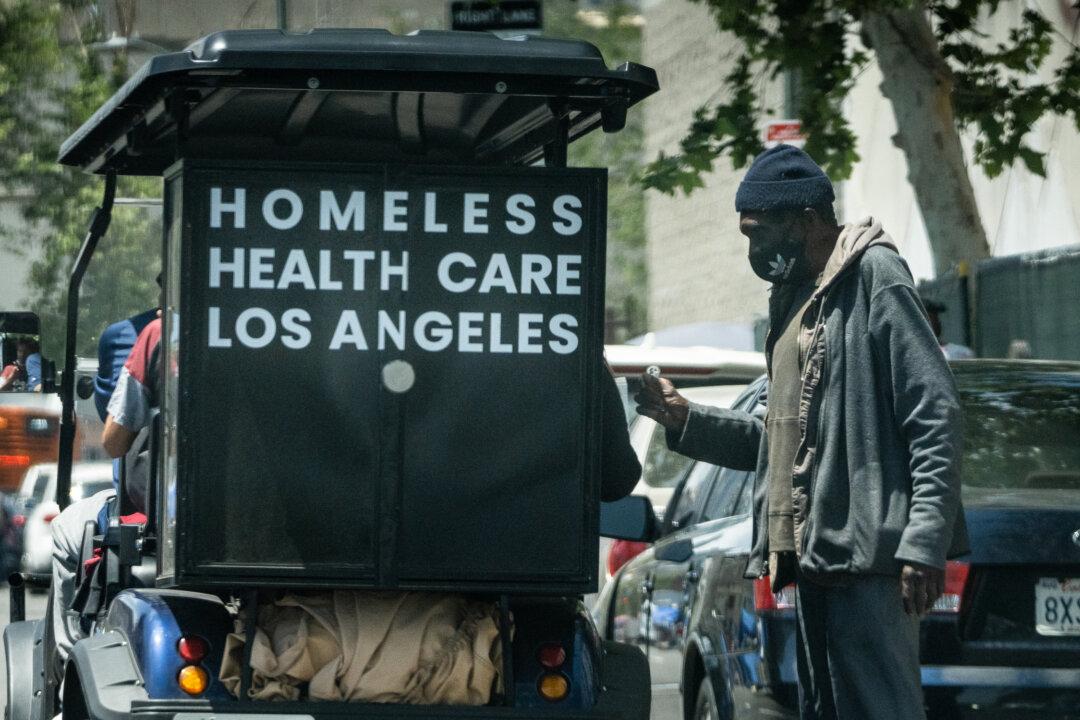The so-called harm reduction model of providing drug equipment and a supervised place to inject or consume the drugs is saving lives in downtown Los Angeles, advocates say, while others contend that it’s harmful and only exacerbates the city’s and the state’s homelessness crisis.
A nonprofit organization called Homeless Health Care Los Angeles, stirred controversy earlier this month, after a video went viral on social media showing workers passing out the government-funded methamphetamine pipes in downtown Los Angeles’s Skid Row neighborhood.





